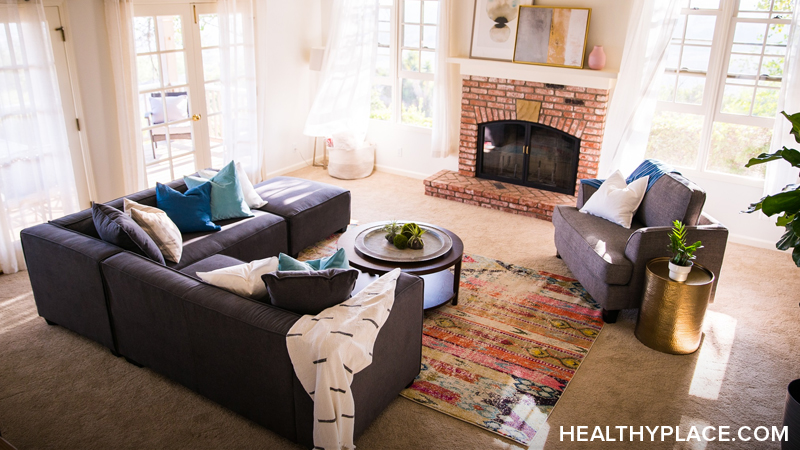Depression Treatment Centers: Types and How They Help

Depression treatment centers exist to help people reclaim themselves and their lives from depression. Depression interferes in living. It hurts mentally and physically. Often, people with depression have difficulties in their relationships because depression is a heavy third wheel. People might lose their jobs, and they also might lose interest in nearly everything they once enjoyed (not that they have the energy to do those things anymore). A big risk of depression is loss of hope. Fortunately, there is treatment for depression that will help someone regain hope and so much more. Sometimes people go to depression treatment centers for help.
Occasionally, someone’s depression treatment no longer works and symptoms recur. When that happens, all hope is not lost. An option when depression stops responding to what you’ve been doing is to go to a depression treatment center. There are different types, and they help in different ways.
Types of Depression Treatment Centers
While, of course, treatment centers vary in what they offer and how they operate, they can be categorized into two broad types:
- Inpatient hospitals
- Residential treatment centers
From time to time, you might hear someone refer to a depression hospital. Technically, there isn’t a hospital exclusively dedicated to depression; however, depression is common in people who go to inpatient mental health hospitals.
An inpatient hospital’s purpose is to help people in crisis or who are undergoing a big change in medication and need to be monitored full-time for a while. A crisis can occur when depression symptoms become so severe that you are:
- Unable to care for yourself or loved ones (particularly children)
- Experiencing psychosis (like hallucinations or delusions)
- Having thoughts of harming yourself or others
- Thinking often about death and suicide
Hospitals provide immediate and intensive care for someone in crisis. Their purpose is to stabilize that person so they can resume treatment out of the hospital. People commonly stay in such a hospital for about four or five days.
Residential depression treatment centers are very different from depression hospitals. Even though they’re not for people in crisis or at risk of harming themselves or others, these treatment centers, sometimes called depression rehab or residential rehab, involve longer stays than inpatient hospitals. While each individual treatment center varies, a typical length of stay is 60 days or longer. That’s because this type of treatment center is drastically different from a hospital.
Most residential treatment centers are for substance abuse, but there are some whose purpose is to provide depression help. Depression treatment centers are characterized by staffing for round-the-clock care and service, a comfortable home-like environment, serene and natural surroundings, and minimal stressors. This is designed to give people a chance to reset and deeply benefit from the help and support provided.
The depression programs offer healing activities such as:
- Therapy (individual, group, and sometimes family)
- Eye movement desensitization and reprocessing (a therapy that helps people recover mental health that was suppressed by past experiences)
- Equine therapy (working closely with horses can help depression)
- Art and other creative therapies
- Yoga
- Guided meditation
- Acupuncture
- Adventure therapy (activities in nature designed to promote healing)
- Exercise
- Nutrition
Hospitals and residential treatment centers differ in what they do, but both help people with depression.
How Depression Treatment Centers and Hospitals Help
Hospitals keep people safe when their depression puts them in immediate danger to themselves or others. They also quickly prepare people for discharge so they can get back on their feet. To do this, a combination of doctors, psychiatric nurses, social workers, psychologists, or therapists creates an individualized treatment plan for the patient. The depression treatment plan is used in the hospital and upon discharge so the patient knows what to do to remain out of crisis.
In the days that someone is in the hospital, they participate in both individual and group therapy to address thoughts, emotions, behaviors, and life circumstances. Also, they receive different medications or different doses of their existing medication to help stabilize the brain.
Depression treatment in a residential setting is also tailored to each individual. The focus here, though, is on the total person and healing the mind, body, and spirit. Promoting wellness is emphasized over managing the illness. Participants help create their own treatment plans so they can address and treat their unique challenges and needs.
The goal of depression treatment centers and hospitals is to help people recover. Because their purpose is different—holistic healing versus crisis management—their atmosphere, approach, and activities differ. Whatever you need to help overcome depression, being in the right setting is what will be most helpful.
APA Reference
Peterson, T.
(2022, January 4). Depression Treatment Centers: Types and How They Help, HealthyPlace. Retrieved
on 2025, December 1 from https://www.healthyplace.com/depression/depression-treatment/depression-treatment-centers-types-and-how-they-help


